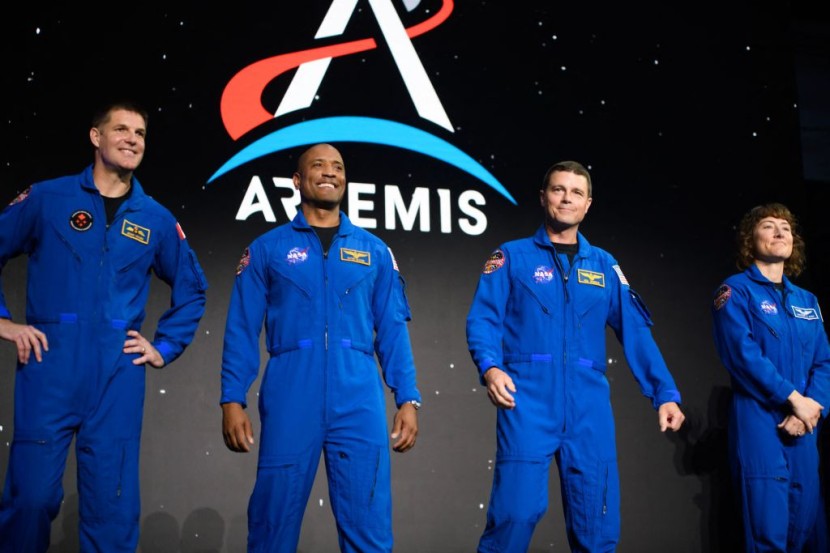
- NASA announced the first female and African-American astronauts ever assigned to a lunar mission
- NASA astronauts selected for the Artemis II mission had participated in earlier International Space Station expeditions
- Artemis II will be the first crewed flight, but not the first lunar landing
On Monday, NASA revealed the identities of the four astronauts who will be the first women and African Americans to be assigned to a lunar mission.
The first lunar crew, consisting of three Americans and one Canadian in half a century, was introduced at a ceremony in Houston, the home of the nation's astronauts and Mission Control.
NASA Moon Mission 2024 Crew
"This is the crew of humanity," NASA Administrator Bill Nelson stated, Fox8 reported. The four astronauts will be the first to pilot NASA's Orion capsule, which will launch from Kennedy Space Center atop a Space Launch System rocket no early than late 2024.
They will not land or even enter lunar orbit but will fly around the moon and return directly to Earth as a precursor to the lunar landing of two other astronauts one year later. Reid Wiseman, the mission's commander, will accompany Victor Glover, a Black American naval aviator; Christina Koch, who holds the world record for the longest spaceflight by a woman; and Canada's Jeremy Hansen, a former fighter pilot and the crew's only space rookie.
Wiseman, Glover, and Koch are all International Space Station residents. They are all in their forties. This is the first international moon crew and the first crew in NASA's new moon program to be called Artemis, after Apollo's mythological twin sister.
In a long-awaited dress rehearsal, an empty Orion capsule flew to the moon and back late last year. Due to its contributions of large robotic arms to NASA's space shuttles and the international space station, the Canadian Space Agency was awarded a seat. Also proposed is one for the moon project.
Hansen expressed appreciation for Canada's inclusion on the flight. From 1968 through 1972, NASA dispatched 24 astronauts to the moon during the Apollo program. Twelve individuals landed.
All were military-trained male test pilots except Apollo 17's Harrison Schmitt, a geologist who, along with the late Gene Cernan, finished the moon landing era. NASA hopes to place two men on the moon by 2025 if the next 10-day moon mission is successful.
NASA chose its first Artemis crew from 41 active astronauts. Canada had four candidates. Wiseman led the crowd in a chant after Monday's event at Johnson Space Center's Ellington Field, which resembled a cheer rally.
At a televised news conference held in Houston at the Johnson Space Center, NASA's mission control, the Artemis II crew, was presented, as per The Guardian.
Artemis II will be the first crewed trip, but not the first lunar landing, of an Apollo successor program aiming to send astronauts to the moon's surface later this decade and build a permanent base there, paving the way for future human exploration of Mars.
NASA Lunar Missions
Artemis I was completed in December 2022, marking the first launch of NASA's powerful next-generation mega-rocket and its freshly constructed Orion spacecraft on a 25-day unmanned test flight.
The purpose of Artemis II's 10-day, 1.4-million-mile (2.3-million-km) trip around the moon and back is to demonstrate that all of Orion's life-support and other systems will function as intended with astronauts on board in deep space.
Before returning, Artemis II will travel approximately 6,400 miles (10,300 km) beyond the moon's far side, marking the closest approach humans have made to Earth's natural satellite since Apollo 17, which brought Gene Cernan and Harrison Schmitt to the lunar surface in December 1972.
Twelve NASA astronauts, all white men, stepped on the moon during six Apollo missions beginning in 1969 with Neil Armstrong and Edwin "Buzz" Aldrin.
Artemis II is expected to reach a maximum distance of more than 230,000 miles (370,000 kilometers) from Earth. The International Space Station's average low-Earth orbit altitude is around 250 miles (420 km) above the globe, according to NDTV.
The Artemis II crew will perform manual maneuvers with the Orion spacecraft after being carried to Earth orbit by NASA's two-stage Space Launch System (SLS) rocket before returning to ground control for additional tests and the lunar flyby part of the mission.
The outbound mission would climax with Orion completing a round around the moon and then using both the Earth's and the moon's gravity to propel the spaceship on a propulsion-free return flight that would last approximately four days and ends with a splashdown in the ocean.
If Artemis II is successful, NASA intends to launch Artemis III a few years later with the program's first lunar landing of people, including a woman, and then continue with crewed flights around once a year.
In contrast to the Apollo mission, which was developed out of the US-Soviet space competition during the Cold War, Artemis is more inclusive, involving private partners such as Elon Musk's SpaceX and government space agencies from Canada, Europe, and Japan.
It also signifies a significant shift in NASA's human spaceflight goals beyond low-Earth orbit after decades of focusing on the Space Shuttle and the International Space Station.
Related Article : Newborn Jupiter Burned Its Moons Surface
@YouTube
© 2025 HNGN, All rights reserved. Do not reproduce without permission.








